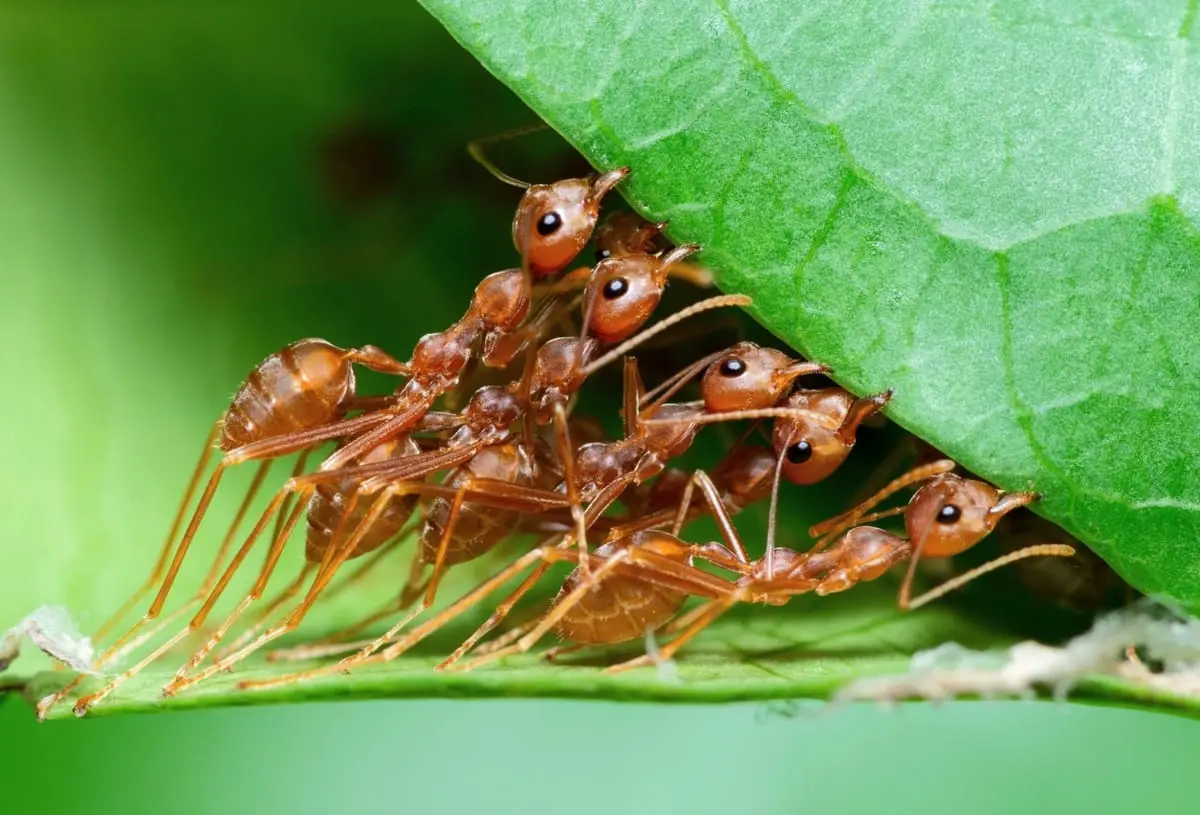Microwave ovens have revolutionized the way we cook and reheat food. They offer quick and easy meal solutions, but they can also pose risks if not used correctly. One question that often arises is why insects, such as ants, seem to be able to survive in microwave ovens. In this article, we will explore the science behind this phenomenon and discuss the potential benefits and risks associated with it.
How Microwave Ovens Work
Microwave ovens work by emitting electromagnetic radiation at a frequency of 2.45 GHz, which causes water molecules in food to vibrate rapidly, generating heat that cooks the food. In contrast to conventional ovens that heat food from the outside in, microwave ovens heat food from the inside out. This allows for faster and more efficient cooking times.
Impact of Radiation on Living Organisms
Microwave radiation can cause damage to living organisms, but the level of harm depends on various factors such as the frequency and power of the radiation, the distance from the source, and the length of exposure. At low levels, microwave radiation is generally considered safe for humans, but exposure to high levels can cause burns and other injuries.
Why Insects Survive in Microwave Ovens?
Insects, such as ants, have a smaller body size and higher water content than most foods that are cooked in a microwave oven. This means that they absorb less microwave radiation and can dissipate heat more effectively, allowing them to survive. In addition, insects have developed unique adaptations that enable them to withstand harsh environmental conditions, such as the ability to slow down their metabolic rate.
Scientific Studies and Experiments
Several scientific studies have been conducted to understand the survival of insects in microwave ovens. One study conducted in 1991 found that ants could survive up to 10 seconds of microwave exposure at a power level of 900 watts. Another study conducted in 2006 found that cockroaches could survive up to 6 minutes of microwave exposure at a power level of 800 watts. The findings suggest that insects have a certain level of resistance to microwave radiation, but the exact mechanism behind it is still not fully understood.
Other Factors Affecting Insect Survival
The survival of insects in microwave ovens can also be affected by other factors such as the power and frequency of the oven, the type of food and container used, and the species and behavioral adaptation of the insect. For example, some insects may be more susceptible to radiation than others, and the use of metal or plastic containers can cause arcing or melting, which can be hazardous.
Risks and Benefits of Insect Survival in Microwave Oven
While the survival of insects in microwave ovens may seem like a nuisance, it can also have potential benefits. For example, insects are a rich source of protein and other nutrients and have been consumed in some cultures for centuries. However, the consumption of microwaved food with insects can pose health risks, as insects may carry harmful bacteria or toxins. Furthermore, the impact of insect survival on ecology and the food chain is still not fully understood.
Impact on Pest Control
The ability of insects to survive in microwave ovens can pose challenges to pest control efforts, as microwave ovens are not an effective means of eradicating them. However, there is potential for the use of microwave radiation in pest management, such as the development of microwave-based traps or the use of targeted radiation to control specific pests. This approach could offer a more eco-friendly and humane alternative to traditional pest control methods.
Microwave Oven Safety and Precautions
It’s essential to follow safety guidelines when using a microwave oven to avoid any accidents or injuries. Here are some safety tips to keep in mind:
Importance of following safety guidelines
- Always read and follow the manufacturer’s instructions and safety guidelines.
- Never attempt to repair a microwave oven yourself. Always seek professional assistance.
- Keep the microwave oven clean and free of any debris, as this can cause fires.
- Never operate the microwave oven when it’s empty, as this can damage the microwave oven.
- Never place any metal objects or containers in the microwave oven, as this can cause fires.
- Always use microwave-safe containers to heat or cook food.
- Do not attempt to dry clothing or other materials in the microwave oven, as this can cause fires.
- Always supervise children when they’re using a microwave oven, as they may not be aware of the potential risks.
Risks of using metal and plastic containers
When using a microwave oven, it’s important to use microwave-safe containers made of glass, ceramic, or plastic. Some plastic containers can melt or release harmful chemicals when heated, which can be dangerous for your health.
It’s also important to avoid using metal containers or utensils in the microwave oven, as they can cause electrical arcing and sparks, leading to fires or explosions.
Precautions for pet owners and children
If you have pets or children, it’s important to take extra precautions when using a microwave oven. Keep the microwave oven out of reach of children and pets, and make sure they are not near the microwave oven when it’s in use.
If you have a pet bird, it’s important to keep them away from the microwave oven, as they are sensitive to radiation and can be harmed by it.
Misconceptions About Insect Survival in Microwave Oven
There are many misconceptions about insects’ ability to survive in a microwave oven. Here are some of the most common myths and false claims:
Common myths about microwave ovens and insects
- Myth: Insects can’t survive in a microwave oven.
- Myth: Insects explode in a microwave oven.
- Myth: Insects die instantly in a microwave oven.
Debunking false claims and theories
While it’s true that insects can survive in a microwave oven, they don’t explode or die instantly. Insects are able to survive because of their size, water content, and resistance to radiation.
Clarification of misunderstandings
Insects may survive in a microwave oven, but it’s not recommended to consume microwaved food with insects. Insects may carry harmful bacteria or parasites that can be dangerous to human health.
Ethical Considerations
The use of microwave ovens in pest control raises ethical considerations about the treatment of insects. While it may be necessary to control insect populations in certain situations, it’s important to consider the impact on insect welfare.
The importance of ethical treatment of insects
Insects play an important role in the ecosystem, and their welfare should be considered when using microwave ovens for pest control. It’s important to use humane and ethical methods of pest control that minimize harm to insects and other living organisms.
The impact of microwave oven on insect welfare
While microwave ovens may be effective in controlling insect populations, they can also cause harm to insects by disrupting their physiological processes and causing pain or suffering.
The responsibility of human actions
As humans, we have a responsibility to consider the impact of our actions on the environment and other living organisms. When using microwave ovens for pest control, it’s important to consider the ethical implications and choose methods that minimize harm to insects and other living organisms.
Future Research and Development
There is still much to be learned about insects’ ability to survive in a microwave oven, and further research is needed to better understand this phenomenon. Scientists are continuing to explore the effects of radiation on insects of different sizes, water content, and species. They are also investigating the potential use of microwaves in pest management, which could be a game-changer in the field of insect control.
One area of research that shows promise is the use of microwave radiation to sterilize insects. This method could potentially be used to control insect populations without resorting to harmful chemicals or pesticides. Scientists are also exploring the use of microwaves to preserve food and increase its shelf life, which could have significant implications for food safety and sustainability.
Another area of research is the development of new microwave technologies that are more efficient, precise, and effective in heating food. Advancements in microwave technology could lead to a better understanding of how microwaves interact with living organisms, including insects. This could lead to the development of more targeted and effective pest control methods that are both safe and environmentally friendly.
Conclusion
In conclusion, insects’ ability to survive in a microwave oven is a fascinating topic that has intrigued scientists and the public alike. While there is still much to be learned about this phenomenon, current research suggests that insects’ small size, low water content, and resistance to radiation are key factors in their survival.
However, it is important to note that microwaving insects in food can pose health risks, and it is essential to follow proper food safety guidelines to avoid consuming insects or their parts inadvertently. Moreover, insects play an essential role in the ecosystem, and we must be mindful of the impact of our actions on their welfare.
As we continue to study the effects of radiation on living organisms, we can gain a better understanding of the complex relationship between technology and nature. We must also continue to explore new technologies and methods to improve food safety, pest control, and sustainability. By doing so, we can create a safer and more sustainable future for ourselves and the world around us.



